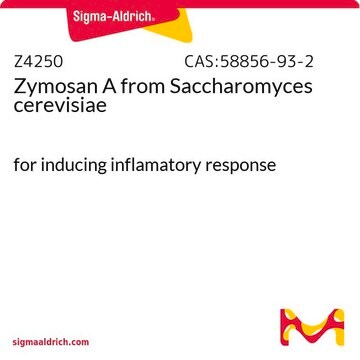I5159
Imiquimod
≥98% (HPLC), solid, caspase 3 activator
Synonym(s):
1-(2-Methylpropyl)-1H-imidazole[4,5-c]quinoline-4-amine
About This Item
Recommended Products
product name
Imiquimod, ≥98% (HPLC), solid
Assay
≥98% (HPLC)
form
solid
solubility
H2O: <2 mg/mL
DMSO: 4 mg/mL (warming to 60 °C for 15 minutes)
SMILES string
CC(C)Cn1cnc2c(N)nc3ccccc3c12
InChI
1S/C14H16N4/c1-9(2)7-18-8-16-12-13(18)10-5-3-4-6-11(10)17-14(12)15/h3-6,8-9H,7H2,1-2H3,(H2,15,17)
InChI key
DOUYETYNHWVLEO-UHFFFAOYSA-N
Gene Information
human ... TLR7(51284)
Looking for similar products? Visit Product Comparison Guide
General description
Application
Biochem/physiol Actions
Features and Benefits
Signal Word
Danger
Hazard Statements
Precautionary Statements
Hazard Classifications
Acute Tox. 3 Oral - Eye Irrit. 2 - Skin Irrit. 2
Storage Class Code
6.1C - Combustible acute toxic Cat.3 / toxic compounds or compounds which causing chronic effects
WGK
WGK 3
Flash Point(F)
Not applicable
Flash Point(C)
Not applicable
Personal Protective Equipment
Certificates of Analysis (COA)
Search for Certificates of Analysis (COA) by entering the products Lot/Batch Number. Lot and Batch Numbers can be found on a product’s label following the words ‘Lot’ or ‘Batch’.
Already Own This Product?
Find documentation for the products that you have recently purchased in the Document Library.
Customers Also Viewed
Our team of scientists has experience in all areas of research including Life Science, Material Science, Chemical Synthesis, Chromatography, Analytical and many others.
Contact Technical Service














